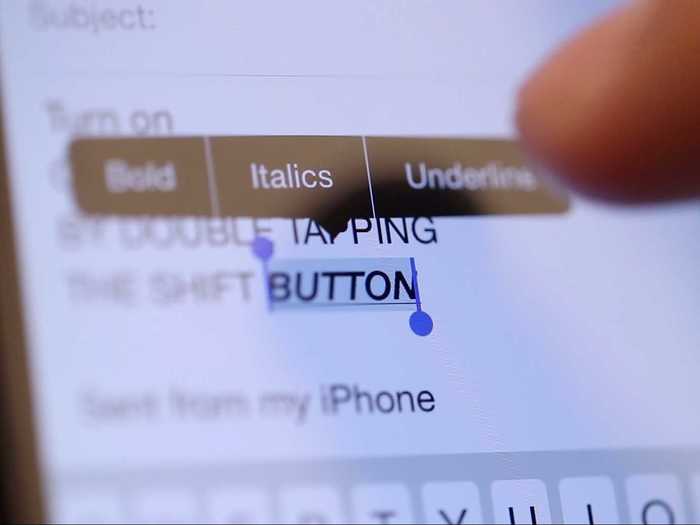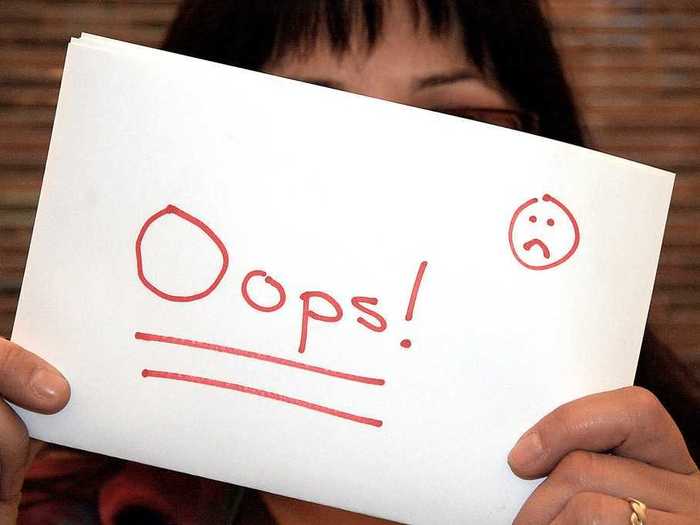14 email-etiquette rules every professional should know
1. Include a clear, direct subject line.

2. Use a professional email address.

If you work for a company, you should use your company email address. But if you use a personal email account — whether you are self-employed or just like using it occasionally for work-related correspondences — you should be careful when choosing that address, Pachter says.
You should always have an email address that conveys your name so that the recipient knows exactly who is sending the email. Never use email addresses (perhaps remnants of your grade-school days) that are not appropriate for use in the workplace, such as "babygirl@..." or "beerlover@..." — no matter how much you love a cold brew.
3. Think twice before hitting "reply all."

No one wants to read emails from 20 people that have nothing to do with them. Ignoring the emails can be difficult, with many people getting notifications of new messages on their smartphones or distracting pop-up messages on their computer screens. Refrain from hitting "reply all" unless you really think everyone on the list needs to receive the email, Pachter says.
4. Use professional salutations.

Don't use laid-back, colloquial expressions like, "Hey you guys," "Yo," or "Hi folks."
"The relaxed nature of our writings should not affect the salutation in an email," she says. "Hey is a very informal salutation and generally it should not be used in the workplace. And Yo is not okay either. Use Hi or Hello instead."
She also advises against shortening anyone's name. Say "Hi Michael," unless you're certain he prefers to be called "Mike."
5. Use exclamation points sparingly.

If you choose to use an exclamation point, use only one to convey excitement, Pachter says.
"People sometimes get carried away and put a number of exclamation points at the end of their sentences. The result can appear too emotional or immature," she writes. "Exclamation points should be used sparingly in writing."
6. Make your message easy to read.

Vary the length of your sentences and paragraphs. "Long sentences or paragraphs are more difficult to read," says Pachter. "Use bullets to set off points you want to make."
7. Do not come across as sounding abrupt.

"Read your message out loud. If it sound harsh to you, it will sound harsh to the reader," she says.
Avoid negative words such as "failure," "wrong," or "neglected."
8. Know that people from different cultures speak and write differently.

Miscommunication can easily occur because of cultural differences, especially in the writing form when we can't see one another's body language. Tailor your message depending on the receiver's cultural background or how well you know them.
A good rule to keep in mind, Pachter says, is that high-context cultures (Japanese, Arab, or Chinese) want to get to know you before doing business with you. Therefore, it may be common for business associates from these countries to be more personal in their writings. On the other hand, people from low-context cultures (German, American, or Scandinavian) prefer to get to the point very quickly.
9. Be cautious with humor.

Humor can easily get lost in translation without the right tone or facial expressions. In a professional exchange, it's better to leave humor out of emails unless you know the recipient well. Also, something that you think is funny might not be funny to someone else.
Pachter says: "Something perceived as funny when spoken may come across very differently when written. When in doubt, leave it out."
10. Reply to your emails — even if the email wasn't intended for you.

It's difficult to reply to every email message ever sent to you, but you should try to, Pachter says. This includes when the email was accidentally sent to you, especially if the sender is expecting a reply. A reply isn't necessary but serves as good email etiquette, especially if this person works in the same company or industry as you.
Here's an example reply: "I know you're very busy, but I don't think you meant to send this email to me. And I wanted to let you know so you can send it to the correct person."
11. Proofread every message.

Your mistakes won't go unnoticed by the recipients of your email. "And, depending upon the recipient, you may be judged for making them," Pachter says.
Don't rely on spell-checkers. Read and re-read your email a few times, preferably aloud, before sending it off.
"One supervisor intended to write 'Sorry for the inconvenience,'" Pachter says. "But he relied on his spell-check and ended up writing 'Sorry for the incontinence.'"
12. Be cautious with emphasis techniques.

With all the options available on computers, it can be tempting to get carried away using very small or large fonts, bolding, italics, and different colors. "Don’t," says Pachter. It's distracting and may be perceived the wrong way.
13. Add the email address last.

"You don't want to send an email accidentally before you have finished writing and proofing the message," Pachter says. "Even when you are replying to a message, it's a good precaution to delete the recipient's address and insert it only when you are sure the message is ready to be sent."
14. Double-check that you’ve selected the correct recipient.

Pachter says to pay careful attention when typing a name from your address book on the email's "To" line. "It's easy to select the wrong name, which can be embarrassing to you and to the person who receives the email by mistake."
Now check out these general workplace etiquette tips:

Popular Right Now
Popular Keywords
Advertisement